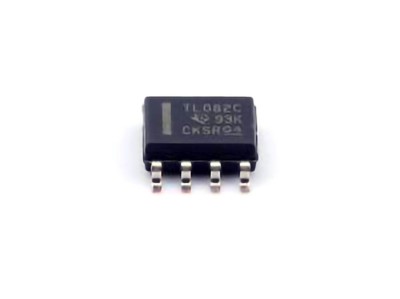In this guide, we dive into diagnosing flash write failures in the MKV31F512VLL12 microcontroller unit (MCU). Whether you’re a seasoned embedded systems engineer or a hobbyist working on a project, understanding the root causes of flash write issues is crucial for building reliable systems. This article provides step-by-step insights into troubleshooting, potential causes, and methods for fixing flash write failures.
MKV31F512VLL12, flash write failure, MCU, troubleshooting, embedded systems, firmware issues, flash Memory , diagnostics, microcontroller troubleshooting
Introduction to MKV31F512VLL12 MCU Flash Write Failures
The MKV31F512VLL12 microcontroller (MCU) is part of NXP’s Kinetis V series, built on the ARM Cortex-M4 core. This MCU is used widely in embedded systems for applications requiring high performance, low Power consumption, and robust security features. One of the key features of this MCU is its internal flash memory, where the program code and data are stored. However, like all electronic systems, issues can arise, particularly when it comes to writing to or erasing data in the flash memory.
A flash write failure in the MKV31F512VLL12 can occur for various reasons. These failures are often elusive, as they may present themselves in a way that seems unrelated to the underlying problem. However, understanding the mechanics of the MCU’s flash memory and knowing the common causes of flash write errors is crucial in diagnosing and resolving these issues effectively.
Common Symptoms of Flash Write Failures
When a flash write operation fails in the MKV31F512VLL12, the symptoms can vary. Some of the most common signs include:
Corrupted firmware: The program stored in flash memory fails to load or executes incorrectly.
Unexpected resets: The MCU may reset unexpectedly due to a flash write failure, especially if the firmware is incomplete or corrupt.
Inconsistent behavior: The MCU may exhibit strange or non-reproducible behavior, such as variables not being stored correctly or code failing to execute in a specific order.
These issues can severely impact the functionality of your embedded system. Identifying the root cause requires a methodical approach and an understanding of both the hardware and the software environment in which the MCU operates.
Key Factors Influencing Flash Write Failures
There are several key factors that influence the success or failure of a flash write operation. Understanding these factors is crucial in diagnosing the problem. These factors include:
Power Supply Issues: Flash memory write operations are highly sensitive to power fluctuations. A low or unstable power supply can cause incomplete write cycles, leading to corruption.
Programming Voltage: The MKV31F512VLL12 requires a specific programming voltage to write data to the flash memory. If the voltage is too low, the write operation will fail. This voltage is often supplied by the MCU itself, but external power sources may be involved in certain applications.
Flash Erase Cycle: Flash memory needs to be erased before new data can be written to it. If the erase cycle is not completed properly, it can lead to issues with writing new data. The erase operation is time-dependent, and errors in the timing sequence can cause write failures.
Incorrect Memory Alignment: Flash memory operations often require specific memory alignment. If a write operation is attempted at an incorrect address or the data is not properly aligned, the write may fail.
Excessive Flash Wear: Flash memory has a limited number of write/erase cycles before it begins to degrade. Over time, this wear can cause flash write failures, especially if the MCU is frequently writing data to the same memory location.
Software Bugs: In many cases, the issue may lie in the software. Improper initialization of the flash memory or incorrect programming of write sequences can result in failed operations.
Flash Memory Write Process in MKV31F512VLL12
The process of writing to the flash memory in the MKV31F512VLL12 involves several steps, including setting the correct permissions, ensuring the proper timing of write operations, and verifying the data integrity. Flash memory writes in this MCU are generally done through a series of instructions that manage both the hardware and software interactions to ensure that data is correctly programmed into memory.
The write process typically involves:
Unlocking the flash memory for writing.
Erasing the memory block (if required).
Writing the new data to the memory location.
Verifying the written data to ensure accuracy.
A failure at any point in this sequence can result in a flash write failure. Therefore, it is important to monitor each phase carefully to ensure proper execution.
Diagnosing and Troubleshooting MKV31F512VLL12 Flash Write Failures
Step-by-Step Troubleshooting
If you encounter flash write failures with the MKV31F512VLL12, the first step is to follow a systematic troubleshooting process. Here’s a step-by-step guide to help you diagnose and resolve the issue:
1. Check the Power Supply
The stability of the power supply is critical to successful flash writing. Even small fluctuations in the power voltage can cause write failures. Start by:
Verifying that the power supply voltage is within the recommended range for the MCU (typically 3.3V for MKV31F512VLL12).
Using an oscilloscope to monitor power supply fluctuations during the flash write operation.
Checking for power dips or noise that might interfere with the flash memory write process.
2. Ensure Correct Flash Erase and Write Sequence
A common cause of flash write failures is an improper erase-write sequence. Ensure that:
Flash memory blocks are properly erased before attempting to write new data.
The erase cycle completes before writing data. You can confirm this by checking the status register of the MCU for flags indicating successful erase completion.
The correct number of wait states is inserted between the erase and write operations. Consult the datasheet for the recommended timing values.
3. Validate Programming Voltage
The MKV31F512VLL12 requires a stable programming voltage for writing to its flash memory. If the voltage is too low, flash write operations will fail. Verify that the programming voltage is within the acceptable range, typically between 1.8V and 3.6V, depending on the operating conditions.
4. Test Flash Memory Wear
If the MCU has been used for a prolonged period, especially in write-intensive applications, it’s possible that the flash memory has reached its endurance limit. Flash memory has a finite number of write cycles, typically around 100,000 cycles per block. To check for excessive wear:
Use wear-leveling algorithms to ensure that data is written to different sectors of flash memory.
If the memory is near its wear limit, consider migrating to another memory block or replacing the flash memory entirely.
5. Inspect Software and Firmware
Many flash write issues are related to software bugs or incorrect memory management. Double-check the firmware code for common issues:
Ensure that the MCU’s flash controller is correctly initialized.
Verify that the correct addresses are used when writing to flash memory.
Look for any bugs in the flash write logic, such as incorrect use of the flash programming API or timing issues.
6. Use Diagnostic Tools and Logging
If you continue to experience issues, consider using diagnostic tools such as:
JTAG/SWD Debuggers to trace the flow of code during flash write operations.
Error Logs: Implement error logging in your firmware to capture detailed information about the failure. This can help pinpoint exactly where the failure occurs.
7. Consult the Data Sheet and Reference Manual
Finally, consult the MKV31F512VLL12’s datasheet and reference manual. These documents contain critical information about flash memory characteristics, programming specifications, and troubleshooting tips. The datasheet often provides detailed information on timing parameters, memory maps, and other crucial details that can help resolve write issues.
Conclusion
Flash write failures in the MKV31F512VLL12 MCU can be caused by a wide range of factors, from power issues to software bugs to hardware wear. By following a systematic diagnostic approach—starting with power checks and proceeding through software validation and wear testing—you can identify and resolve the root causes of these failures. Understanding the underlying principles of how flash memory works and the specific needs of the MKV31F512VLL12 will ensure that your embedded systems remain reliable and functional, even when faced with flash write challenges.
In conclusion, a careful and methodical approach to diagnosing flash write failures is essential for maintaining the performance and reliability of embedded systems. Keep in mind the key factors influencing flash memory writes, and always verify both the hardware and software components involved in flash operations to pinpoint and resolve any issues effectively.
Partnering with an electronic components supplier sets your team up for success, ensuring the design, production, and procurement processes are quality and error-free.


